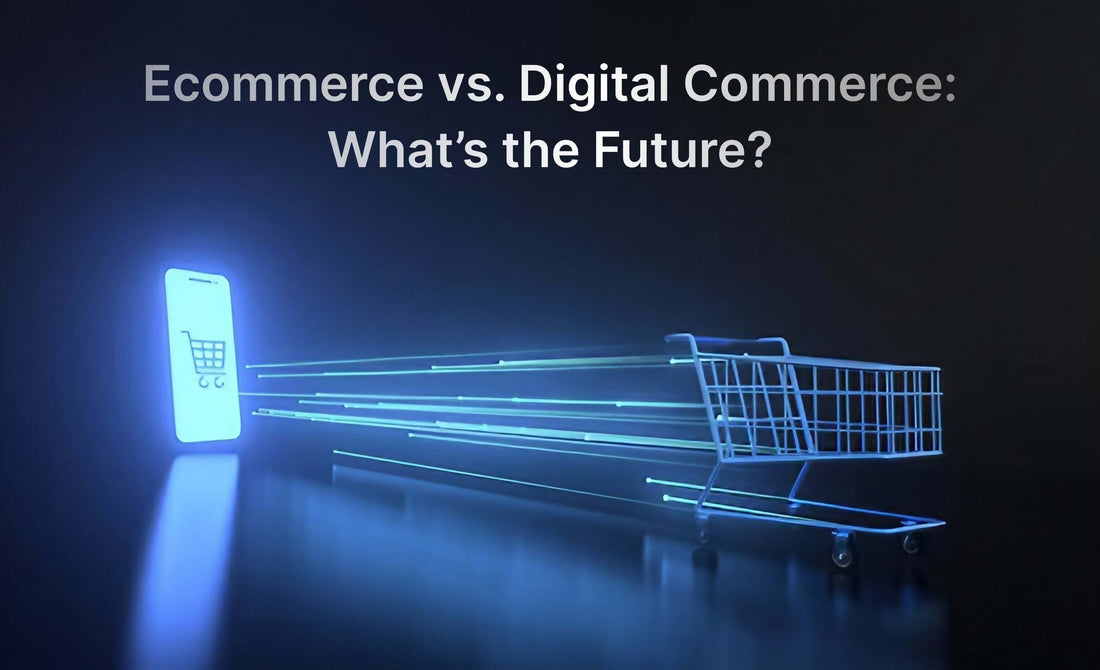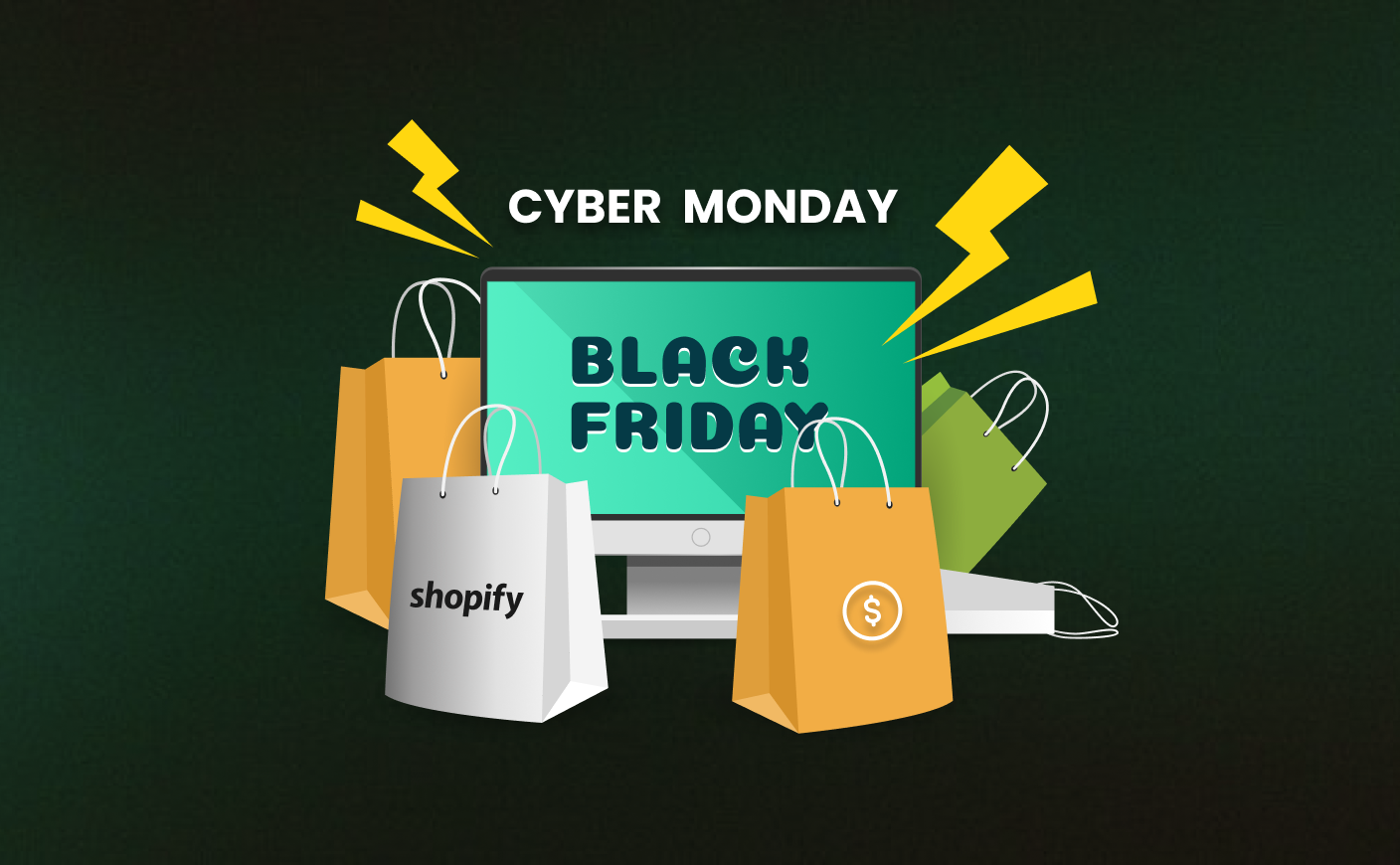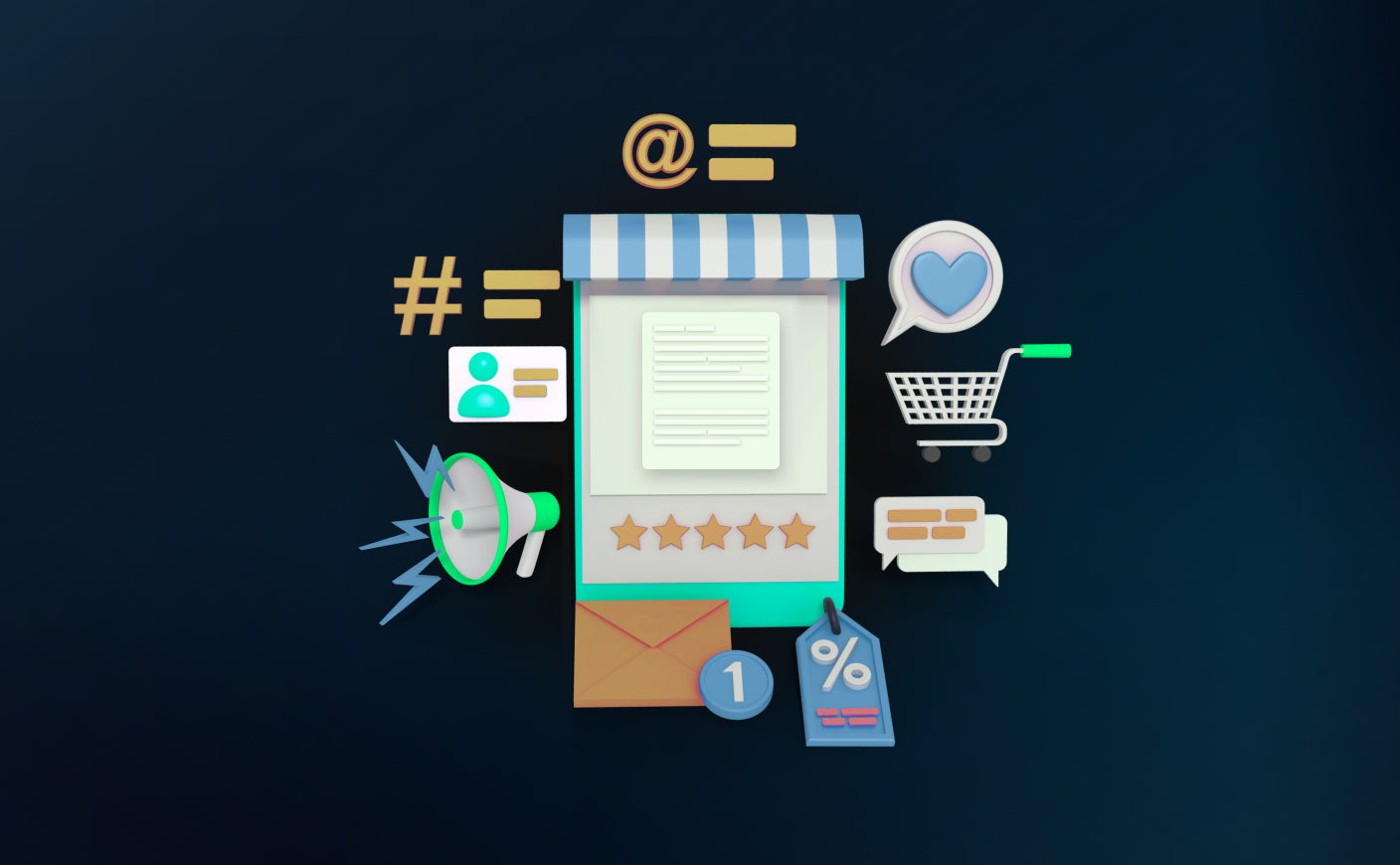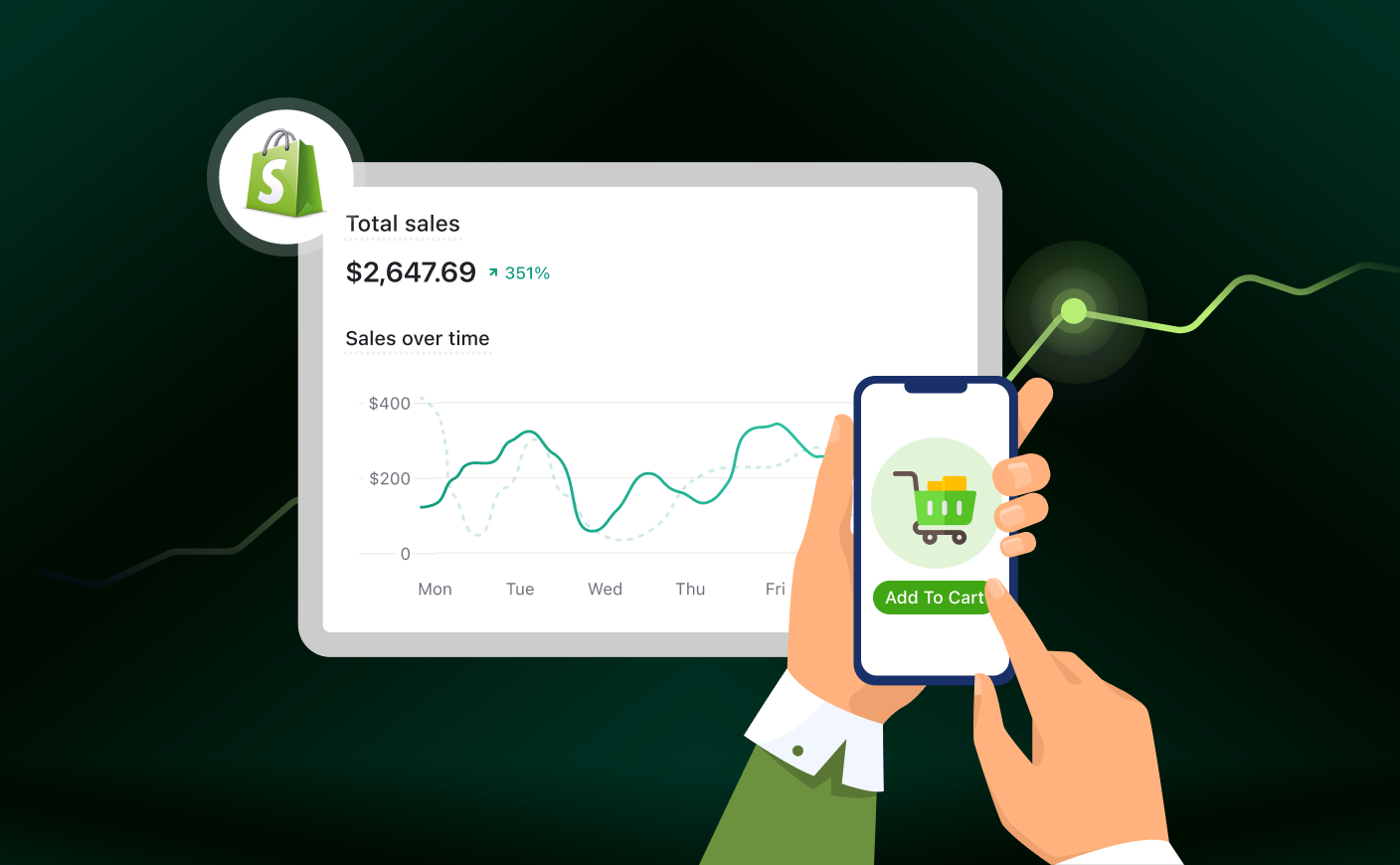Ecommerce vs. Digital Commerce: What’s the Future?
ecommerce
Ecommerce vs. Digital Commerce
Shopify Development

A decade ago, if someone had said that you would be ordering groceries, booking vacations, and even customizing a pair of sneakers - all while being on your phone lounging on your couch - you might have raised an eyebrow. But right now it’s just another Saturday for us!
Ecommerce has completely changed how we buy and sell things.
So what about digital commerce? Well, let’s just say that they are a completely different beast. Here, things are not limited to just websites and smooth checkouts, but so much more - personalized recommendations, voice-assisted shopping, AI-driven customer service, and an integrated connection between online and offline worlds.
The big question?
Is traditional ecommerce on its way out? Or is digital commerce just a fancy buzzword?
Let’s break it down and see what the future really holds for all of us.
Understanding Ecommerce - A Detailed Guide
To define in simple terms, Ecommerce (short for electronic commerce) is the process of buying and selling of goods and services over the internet.
But here’s the thing—if we reduce it to just “online shopping,” we miss out on the bigger picture.
Ecommerce is an intricate web of interactions, covering everything from browsing a product to payment processing, order fulfillment, post-sales support, and even returns.
It’s not just businesses selling to consumers. There are multiple layers to ecommerce, including:
- B2C (Business to Consumer): Traditional online shopping—think Amazon, Nike, or Apple’s online store.
- B2B (Business to Business): Companies selling to other businesses, such as Shopify offering ecommerce solutions to store owners.
- C2C (Consumer to Consumer): Platforms like eBay or Facebook Marketplace where individuals sell to each other.
- D2C (Direct to Consumer): Brands bypassing middlemen and selling straight to customers—Warby Parker, Glossier, and Dollar Shave Club are great examples.
Each of these models operates differently, yet they all share one common goal—delivering an exceptional digital shopping experience.
Now that we have an overview of Ecommerce, let’s talk about its key elements that make it work.
The store visible to us
The store visible to us is the digital equivalent of a physical store. It's where customers land, browse products, and make decisions. A well-designed storefront is appealing as well as guides the user effortlessly toward a purchase.
It includes:
- UX & UI Design: The best ecommerce sites feel intuitive. Buttons are where they should be, navigation is smooth, and every step feels natural.
- Mobile Optimization: More than half of online purchases happen on mobile devices. A slow, clunky site? That’s a lost sale.
- Personalization: AI-driven recommendations, dynamic pricing, and user behavior tracking help tailor the shopping experience.
The product database
The key element that helps to manage thousands of products - data organization.
It includes:
- Product Information Management (PIM): Stores all the essential details—descriptions, images, prices, stock levels.
- Search & Filters: An ecommerce site without an effective search bar is like a supermarket without aisle signs.
- SEO Optimization: Products need to be findable, not just within the store but on Google, too.
The shopping cart and checkout
Approximately 70% of shoppers abandon their carts when trying to checkout. Why? Simple - A bad checkout experience.
It includes:
- Guest Checkout vs. Account Creation: Some people love convenience; others hate the hassle of signing up. Smart stores offer both.
- Payment Flexibility: Credit cards, digital wallets, BNPL (Buy Now, Pay Later)—the more options, the better.
- Security Measures: SSL certificates, fraud detection, and two-factor authentication build customer trust.
The backend of the ecommerce store
The backend of the ecommerce store is like its brain - it connects everything.
It includes:
- Inventory Management: Keeps track of stock levels in real time to avoid overselling.
- Order Processing & Fulfillment: From payment confirmation to shipping labels, every step needs to be smooth.
- Customer Relationship Management (CRM): Tracks customer interactions and helps businesses personalize marketing efforts.
Logistics and shipping
An order is never complete until it reaches your customer.
It includes:
- Warehousing & Fulfillment Centers: Brands like Amazon have revolutionized fulfillment speed with distributed warehouses.
- Last-Mile Delivery: The final step—getting the package to the customer. It’s often the trickiest and costliest part.
- Returns & Refunds: A smooth and easy return policy can enhance customer loyalty.
Marketing of the product
A shop without any traffic is like a shop standing nowhere.
It includes:
- SEO & Content Marketing: Helps customers discover products through organic search.
- Paid Advertising: Google Ads, Facebook Ads, influencer partnerships—these bring in targeted traffic.
- Email & SMS Marketing: Retargeting abandoned carts and keeping customers engaged.
So why Ecommerce work for millions of business owners?
- Global Reach: A small business can sell worldwide without opening physical stores.
- 24/7 Availability: No closing hours. People shop whenever they want.
- Lower Operational Costs: No rent, no physical inventory requirements, and automated processes reduce expenses.
- Data-Driven Decision Making: Ecommerce businesses have access to real-time customer data, helping them make informed decisions.
- Scalability: Start small, grow big. Ecommerce allows businesses to scale effortlessly.
Understanding Digital Commerce - A Detailed Guide
Let’s be honest - when we all hear the word “digital commerce”, it is common for us to think that it is just another fancy word for ecommerce.
But it is not.
You can think of ecommerce as a single transaction - you browse a website, add a product to the cart, pay, and receive a confirmation email. Simple.
Now, think of digital commerce as an entire ecosystem. It’s not just about selling things online; it’s about how businesses interact with customers across every digital touchpoint—social media, mobile apps, AI-driven chatbots, voice assistants, IoT devices, and even AR shopping experiences.
Here’s a simple way to put it:
If ecommerce is a store, digital commerce is an experience. It goes beyond just a website and turns every digital interaction into an opportunity for a sale, a relationship, or a long-term engagement.
If you’ve ever bought something through Instagram, received a personalized discount code via email, used Alexa to reorder groceries, or received a push notification about a flash sale—you’ve already been part of the digital commerce revolution.
Here’s what makes digital commerce stand out:
- It’s Omnichannel: Customers can interact with a brand through multiple channels—website, app, social media, email, SMS, and even smart devices.
- It’s Automated: AI and machine learning personalize product recommendations, chatbots handle queries, and predictive analytics anticipate customer needs.
- It’s Experience-Driven: Customers aren’t just buying products; they’re engaging with brands in immersive ways—think AR try-ons, voice-activated orders, and AI-driven customer service.
Digital commerce is not just about selling—it’s about understanding the customer journey and making every interaction meaningful.
Now let us talk about the core elements that make digital commerce work.
Omnichannel integration
Unlike traditional ecommerce, which primarily happens on a website, digital commerce meets customers where they are already spending time.
Let’s break this down into:
- Social Commerce: Shopping directly on Instagram, TikTok, and Pinterest without leaving the app.
- Marketplaces & Third-Party Platforms: Selling through Amazon, Walmart, or niche marketplaces.
- Mobile Commerce (mCommerce): Dedicated shopping apps, one-click checkouts, and mobile-optimized browsing.
- Voice Commerce: Ordering through Alexa, Google Assistant, or Siri.
- IoT & Wearables: Smart devices reordering essentials automatically (think your fridge restocking milk when you’re low).
AI personalization
Have you ever wondered how websites know what exactly you want before you even know? Well, that’s not magic. It is the power of artificial intelligence.
It includes:
- Dynamic Product Recommendations: AI analyzes browsing history, past purchases, and even location to suggest products.
- Personalized Marketing Messages: Email campaigns that feel tailor-made for you.
- Predictive Analytics: Stores can anticipate customer needs before they arise (like reminding you to restock an item).
Smart checkouts and payments
While traditional ecommerce payments can be quite tedious at certain occasions, digital commerce makes this process quite simple and easy.
Let’s see how:
- One-Click Checkouts: No need to re-enter card details—saved payment methods make transactions seamless.
- BNPL (Buy Now, Pay Later): Services like Klarna and Afterpay let customers split payments into installments.
- Cryptocurrency & Alternative Payments: More brands are accepting Bitcoin, Ethereum, and digital wallets.
- Voice-Activated Payments: Imagine confirming a purchase just by saying, “Alexa, buy more coffee.”
Automated customer service
Customer support usually meant waiting in long queues for agents. With digital commerce, let’s just say, things are not the same anymore.
Let’s see how.
- AI Chatbots: Instant responses, order tracking, and troubleshooting—all automated.
- Voice Assistants & Virtual Shopping Guides: AI-powered advisors help customers choose the right product.
- Self-Service Support: Customers can track orders, process returns, and get help without human intervention.
Data-driven decision making
Unlike traditional retail, where brands rely on guesswork, digital commerce is powered by real-time data.
Let’s see how:
- Heatmaps & Click Tracking: See where customers drop off and optimize accordingly.
- Customer Behavior Analytics: Understand shopping patterns and adjust strategies in real-time.
- Sentiment Analysis: AI scans reviews, social media, and feedback to gauge customer emotions.
Ecommerce vs Digital Commerce: A Comparative Analysis
We will do a detailed analysis of ecommerce and digital commerce in tabular form.
|
Factor |
Ecommerce |
Digital Commerce |
|
Definition |
Ecommerce refers to buying and selling goods and services online, primarily through a website or marketplace. |
Digital commerce extends beyond online transactions, integrating technology-driven customer engagement across multiple digital channels. |
|
Scope |
Limited to online shopping via websites or marketplaces. |
Includes ecommerce but expands to AI, chatbots, social commerce, IoT, voice commerce, and AR experiences. |
|
Customer interaction |
Transaction-focused - customers browse, add to cart, and purchase. |
Experience driven- brands engage with customers through personalized journeys before, during, and after the purchase. |
|
Sales channels |
Websites, marketplaces (Amazon, eBay), and mobile commerce (mCommerce). |
Omnichannel—social media, AI-powered chatbots, smart devices, voice assistants, metaverse stores, and AR shopping. |
|
Personalization |
Basic—recommendations based on past purchases or browsing history. |
Advanced—AI-driven dynamic content, predictive analytics, and hyper-personalized product suggestions. |
|
Technology integration |
Uses basic website functionalities, payment gateways, and cart systems. |
Leverages AI, automation, big data, IoT, machine learning, and AR/VR for a seamless experience. |
|
Marketing approach |
Relies on SEO, PPC, email marketing, and social media ads. |
Integrates AI-powered customer insights, automated retargeting, and data-driven omnichannel campaigns. |
|
Customer support |
Live chat, email, and phone support (often manual). |
AI-driven chatbots, automated self-service portals, and voice assistants for instant support. |
|
Checkout experience |
Standard checkout with manual entry of details. |
One-click checkouts, biometric authentication, BNPL (Buy Now, Pay Later), and voice-activated payments. |
|
Automation level |
Minimal—mostly manual processes for order processing and customer engagement. |
High—AI-driven chatbots, predictive analytics, and automated marketing campaigns streamline operations. |
|
Data utilization |
Limited—basic sales analytics and customer behavior tracking. |
Advanced—real-time data analysis, sentiment tracking, heatmaps, and predictive decision-making. |
|
Scalability |
Growth depends on website traffic and manual marketing efforts. |
Highly scalable—brands can expand through multiple digital touchpoints without increasing physical infrastructure. |
|
Customer retention |
Relies on loyalty programs, discounts, and email marketing. |
Builds deeper relationships using AI-based engagement, personalized recommendations, and predictive reordering. |
|
Examples |
Amazon, Flipkart, Shopify-powered stores. |
Apple’s ecosystem, Nike’s AR shopping, Instagram and TikTok commerce, Amazon’s AI-driven recommendations. |
|
Future potential |
Continues to grow but remains limited to traditional website-based transactions. |
Expanding rapidly with AI, automation, immersive shopping, and predictive commerce redefining customer engagement. |
Ecommerce vs. Digital Commerce: What Is The Final Verdict?
While ecommerce remains a crucial component of online retail, the shift towards digital commerce is undeniable.
Consumers now expect more than just a transactional relationship; they seek personalized, engaging, and incredible experiences across all digital touchpoints. Businesses that recognize and adapt to this shift—by investing in advanced technologies, integrating their channels, and focusing on the entire customer journey—are better positioned to thrive in the current and future marketplace.
In conclusion, while ecommerce laid the groundwork for online transactions, digital commerce builds upon this foundation, offering a more comprehensive and engaging approach that aligns with modern consumer expectations.
Adapting digital commerce isn't just an option; it's becoming a necessity for businesses aiming to stay competitive in today's dynamic market.
Frequently Asked Questions
Is digital commerce the future of online shopping?
Yes! Digital commerce goes beyond transactions, focusing on personalized experiences, AI-driven recommendations, and effortless omnichannel engagement. As customer expectations evolve, businesses must adapt digital commerce strategies to stay competitive and build lasting customer relationships.
How is digital commerce different from traditional ecommerce?
Ecommerce primarily focuses on online buying and selling, while digital commerce integrates AI, analytics, and multiple digital touchpoints to enhance the customer journey. It prioritizes personalization, engagement, and a seamless shopping experience across various online and offline channels.
Can small businesses benefit from digital commerce?
Absolutely! Digital commerce enables small businesses to compete by leveraging AI-driven insights, social commerce, and omnichannel strategies. Even with a limited budget, automation and data-driven personalization help create better customer experiences and increase conversion rates.
Why is omnichannel strategy essential in digital commerce?
Omnichannel strategies ensure a consistent shopping experience across websites, mobile apps, social media, and physical stores. Customers can browse, buy, and interact seamlessly, improving engagement, brand trust, and long-term customer retention in a highly competitive market.
Should ecommerce businesses shift entirely to digital commerce?
Not necessarily! Businesses should gradually integrate digital commerce elements like AI, personalization, and omnichannel experiences. A hybrid approach—maintaining ecommerce foundations while evolving into digital commerce—helps businesses scale, optimize customer interactions, and boost revenue.
CrawlApps
At CrawlApps, we don’t just build Shopify stores—we create experiences that sell. We’re a bunch of problem-solvers who love turning ideas into stores that actually converts. Whether it’s fixing what’s broken or building something from scratch, we make sure every detail works in your favor. No fluff, no jargon—just real solutions that help your business grow. If you’re serious about Shopify, you’ll feel right at home with us.















